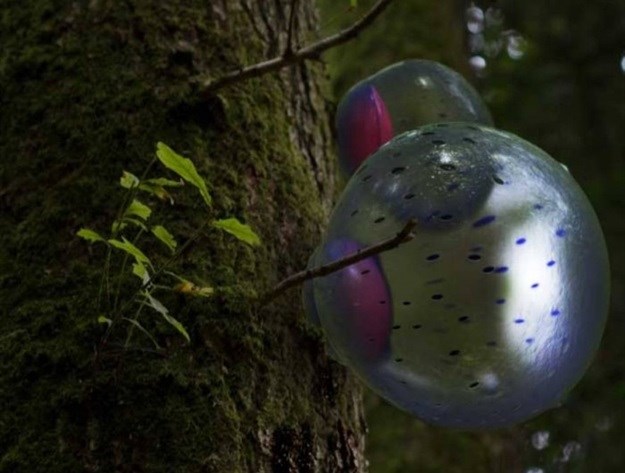The industrialisation of the natural world

As an experimental designer, Ginsberg investigates ethical futures using the processes that designers and researchers are developing today. An expert in synthetic biology, Ginsberg’s Designing for the Sixth Extinction explores its applications in the future. The project asks: What might the ‘wilds’ look like in a synthetic biological future?
“Could we tolerate ‘rewilding’ — the conservation movement that lets nature take control — using synthetic biology to make nature ‘better’?” she writes. “Letting synthetic biodiversity loose to save the ‘nature’ that we idealise would disrupt existing conventions of preservation.”
In Ginsberg’s version of the future, synthetic biologists would design companion species to support endangered natural species and ecosystems. Patented species would be released into the wild, financed by corporate biodiversity offset schemes.

“For a thriving bioeconomy, the preservation of natural biodiversity is worthwhile not just for sentimental reasons, it is also a valuable DNA library for future biological designs,” Ginsberg explains.
The specially designed species would be based on existing species of fungus, bacteria, invertebrates and mammals. They are “ecological machines that fill the void left by vanished organisms, or offer novel protection against more harmful invasive species, diseases and pollution.”
Ultimately, the project begs the question: could these organisms even be considered “alive”?

“The taxonomic status of organisms that are technologically isolated with no purpose except to save others is also uncertain. Are they even ‘alive’? If nature is totally industrialised for the benefit of society—which for some is the logical endpoint of synthetic biology — will nature still exist for us to save?”
Source: Design Indaba

Design Indaba inspires and empowers people to create a better future through design and creativity. We are an online publication (www.designindaba.com) with an annual festival and social impact Do Tank.
Go to: www.designindaba.com







